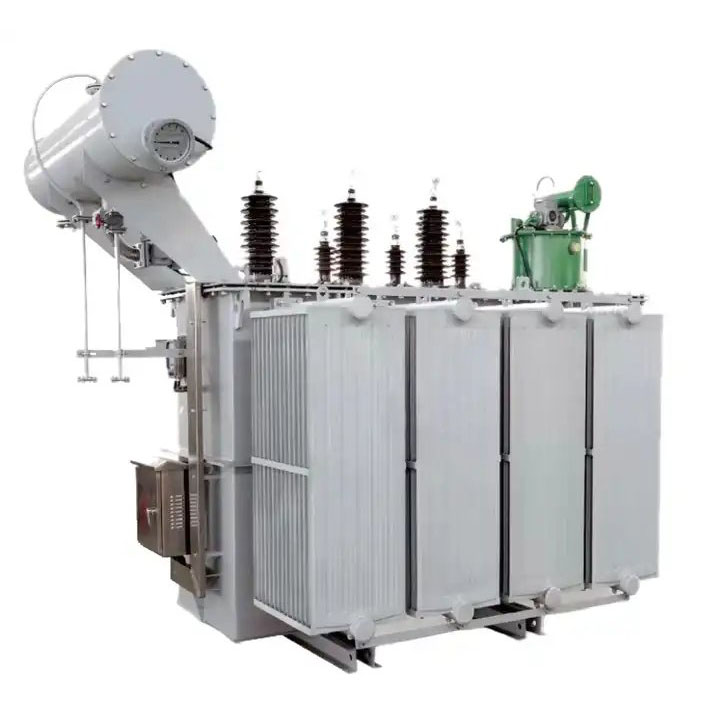
- English
- Español
- Português
- русский
- Français
- 日本語
- Deutsch
- tiếng Việt
- Italiano
- Nederlands
- ภาษาไทย
- Polski
- 한국어
- Svenska
- magyar
- Malay
- বাংলা ভাষার
- Dansk
- Suomi
- हिन्दी
- Pilipino
- Türkçe
- Gaeilge
- العربية
- Indonesia
- Norsk
- تمل
- český
- ελληνικά
- український
- Javanese
- فارسی
- தமிழ்
- తెలుగు
- नेपाली
- Burmese
- български
- ລາວ
- Latine
- Қазақша
- Euskal
- Azərbaycan
- Slovenský jazyk
- Македонски
- Lietuvos
- Eesti Keel
- Română
- Slovenski
- मराठी
- Srpski језик
Oil Immersed Transformers: Comprehensive Guide to Their Working and Applications
2024-06-14
Oil Immersed Transformers: Comprehensive Guide to Their Working and Applications

Introduction to Oil Immersed Transformers
Oil immersed transformers are vital components in the energy sector, known for their efficiency and reliability. In this comprehensive guide, we will explore the working principles, applications, and benefits of oil immersed transformers. Understanding these aspects will help in making informed decisions when selecting and maintaining these essential devices.
Working Principles of Oil Immersed Transformers
Oil immersed transformers operate by using oil for insulation and cooling. The oil helps in dissipating heat generated during the transformer's operation, ensuring optimal performance and longevity. Oil immersed transformers consist of a core and windings submerged in insulating oil. The oil acts as a dielectric medium, providing insulation and cooling by circulating through the transformer's internal components.
Oil immersed transformers are designed to handle high voltage levels, making oil immersed transformers suitable for various industrial and commercial applications. The use of oil not only improves the efficiency of oil immersed transformers but also enhances the safety and reliability of the power distribution systems oil immersed transformers are part of.
Applications of Oil Immersed Transformers
Oil immersed transformers are widely used in power distribution networks, industrial plants, and commercial buildings. In power distribution, oil immersed transformers are crucial for stepping down high voltage electricity from power plants to lower voltage levels suitable for residential and commercial use. Industrial plants rely on oil immersed transformers to manage the voltage levels required for heavy machinery and equipment, ensuring smooth and efficient operations.
In commercial buildings, oil immersed transformers provide a reliable source of electricity, supporting various electrical systems and ensuring uninterrupted power supply. The versatility and robustness of oil immersed transformers make oil immersed transformers an ideal choice for diverse applications across different sectors.

Benefits of Oil Immersed Transformers
One of the primary benefits of oil immersed transformers is their high efficiency. The use of oil for cooling and insulation reduces energy losses, making oil immersed transformers more efficient compared to dry-type transformers. Additionally, oil immersed transformers have a longer lifespan due to the effective cooling provided by the oil, which prevents overheating and extends the operational life of the components.
Oil immersed transformers also offer better overload capacity, allowing oil immersed transformers to handle sudden increases in electrical demand without compromising performance. This makes oil immersed transformers particularly useful in applications where fluctuating power requirements are common.
Maintenance of Oil Immersed Transformers
Regular maintenance is essential to ensure the optimal performance and longevity of oil immersed transformers. Key maintenance tasks include monitoring the oil level, checking for oil leaks, and conducting periodic oil analysis to assess the condition of the insulating oil. Replacing or regenerating the oil when necessary helps maintain the insulating properties and cooling efficiency of oil immersed transformers.
It is also important to inspect the physical condition of oil immersed transformers, including the core, windings, and bushings. Regular maintenance not only prolongs the life of oil immersed transformers but also ensures the safety and reliability of the entire power distribution system.
Conclusion
Oil immersed transformers play a crucial role in the efficient and reliable distribution of electricity across various sectors. By understanding the working principles, applications, and benefits of oil immersed transformers, stakeholders can make informed decisions regarding the selection, installation, and maintenance of these essential devices.
For more information on oil immersed transformers and related products, visit our product page and explore our range of high-quality transformers designed to meet your specific needs.
Additional Resources
1.Understanding Transformer Maintenance
2.Benefits of Oil Immersed vs. Dry Type Transformers




